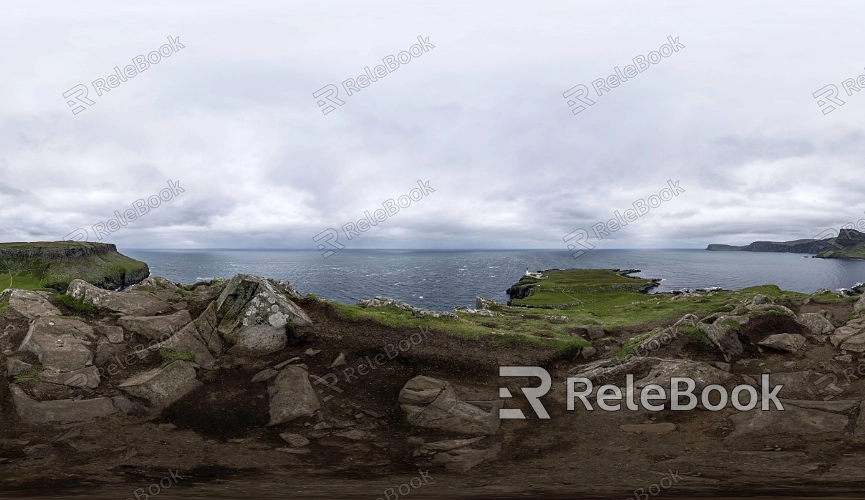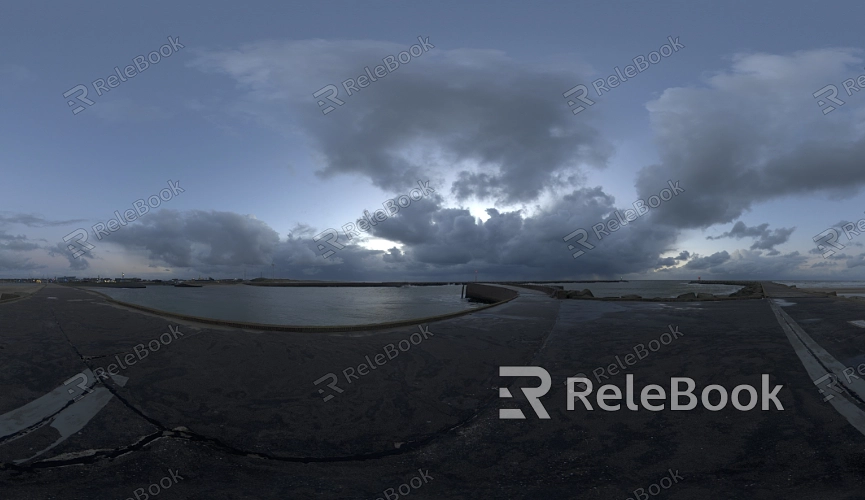What is the Difference Between HDR Texture Backgrounds and Regular Textures
In real-world projects, HDR textures are often utilized, but how exactly do they differ from regular textures? How do these differences impact the final outcome and performance in projects? Whether you're working in Blender, Maya, 3ds Max, Unity, or Unreal Engine, this question typically arises when handling complex lighting and scene rendering. In this article, we'll break down the key differences between HDR textures and regular textures to help you make the right choice and improve your overall render quality.

Dynamic Range Differences
The most obvious difference between HDR textures and regular textures is the dynamic range they capture. Regular textures are typically stored in standard image formats like JPG or PNG, which have a limited range of brightness and tend to "clip" at higher brightness levels. This means regular textures lose detail in the brightest areas, leading to overexposure. In contrast, HDR textures capture a broader range of brightness information, from the darkest shadows to the brightest highlights, even including differences in light levels that are often imperceptible to the human eye.
HDR textures allow the rendering engine to dynamically adjust brightness based on the lighting environment, resulting in smoother transitions between light and dark areas and more realistic reflections. Regular textures, on the other hand, are restricted by their limited brightness range, which makes them less effective in scenes requiring dynamic lighting changes.
Lighting and Reflection Effects
HDR textures excel in producing superior lighting and reflection effects, a critical factor for designers. HDR texture backgrounds can act as light sources, contributing to realistic reflection and refraction effects. By capturing the full spectrum of natural light, HDR textures provide a more accurate representation of light and shadows, making surface reflections on objects appear more natural.
When used as an environmental light source, HDR textures enhance the level of detail on every object in the scene based on how they reflect light. While regular textures can also be used as background images, their lack of brightness information typically results in less satisfying reflection effects, especially in scenes with intense highlights or deep shadows.
File Size and Performance Impact
Due to the extra information HDR textures capture, they tend to be much larger in file size compared to regular textures. For complex scenes, this can lead to higher system resource usage and affect rendering speed.
HDR texture files are often stored in formats like EXR or HDR, which support 32-bit floating-point data for each pixel’s brightness information. As a result, their file sizes are significantly larger than typical image files. In contrast, regular texture files are much lighter and require less memory and processing power during rendering, making them more suitable for projects with limited resources or scenes that don’t demand complex lighting effects.
Use Cases and Suitability
HDR textures are ideal for scenes where realistic lighting effects are crucial, such as architectural visualization, product design, and film animation. In these contexts, designers aim to capture and replicate subtle shifts in natural light, and HDR textures deliver more lifelike results.
Architectural visualization and outdoor scenes, like skies, cityscapes, or natural landscapes, often rely on HDR textures to create realistic environmental lighting. On the other hand, regular textures work better as backgrounds in less detailed scenes with lower lighting demands or in game environments where performance is a priority.

Color Accuracy
HDR textures have a significant advantage not only in brightness but also in color accuracy. They capture richer color information and maintain consistent color and brightness under various lighting conditions. Especially in high-contrast scenes, HDR textures provide more natural transitions between colors.
Regular textures, with their 8-bit or 16-bit color depth, are prone to losing color detail in bright or dark areas, which can lead to a drop in image quality. HDR textures, however, retain accurate color representation across the entire brightness spectrum, ensuring that no color information is lost due to extreme lighting conditions.
Editing and Post-Processing Flexibility
HDR textures offer far more flexibility during post-production. Designers can adjust exposure, brightness, and contrast without losing detail. Regular textures, on the other hand, can quickly become distorted when over-edited, particularly in highlights and shadows.
HDR textures allow for more precise adjustments in post-processing, enabling designers to tweak lighting effects according to the specific needs of the scene. Regular textures have limited adjustment range, and once their brightness or color range is exceeded, crucial details can be lost.
File Format Compatibility
HDR textures are typically stored in specific file formats like HDR and EXR, which retain more brightness and color data. Regular textures, however, are usually saved in common formats like JPG or PNG. When working on a project, designers need to choose the right format based on the project’s requirements to ensure compatibility and rendering efficiency.
HDR formats are widely supported by professional rendering software, but in certain real-time rendering engines, additional configurations or plugins might be necessary. Regular image formats, on the other hand, can be used directly across almost all graphic software, making them more universally compatible.
By comparing HDR textures and regular textures in terms of dynamic range, lighting effects, file size, color accuracy, and editing flexibility, it becomes clear that HDR textures offer superior performance in scenes requiring high-quality lighting effects. However, regular textures remain a practical choice for projects with limited resources. Understanding these differences will help designers make smarter decisions, optimize rendering quality, and streamline their workflows.
If you're looking for high-quality HDR image resources, 3D textures, SketchUp models, or 3ds Max models for your projects, Relebook offers a vast collection that can help you achieve outstanding visual results.

